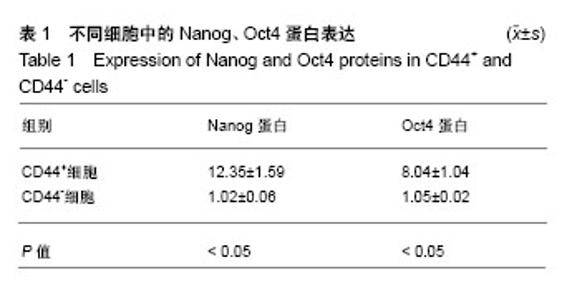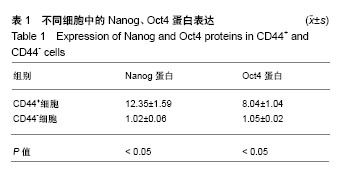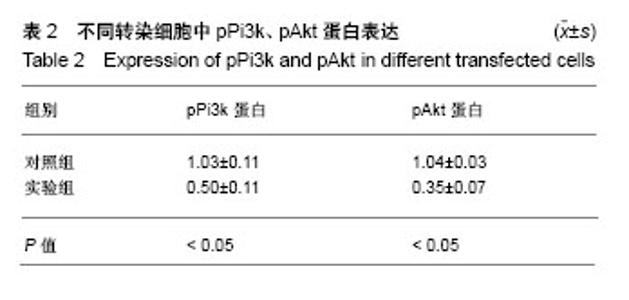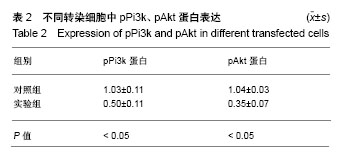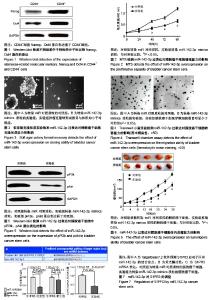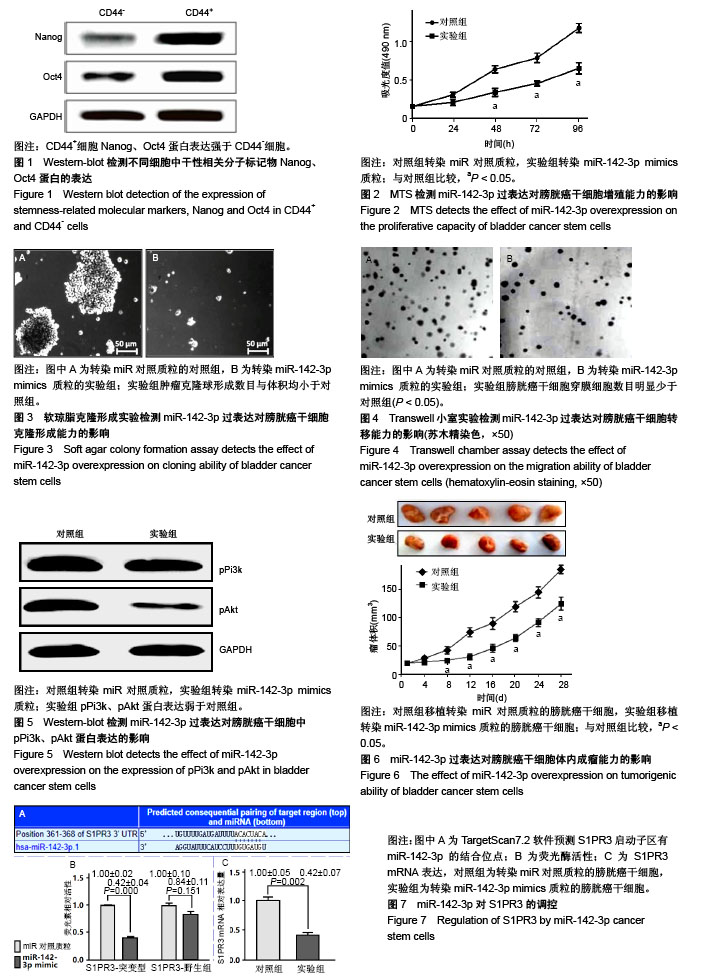| [1] Yan M,Jing X,Liu Y.Screening and identification of key biomarkers in bladder carcinoma: Evidence from bioinformatics analysis.Oncol Lett.2018;16(3):3092-3100. [2] Siegel RL,Miller KD.Cancer statistics, 2018.CA Cancer J Clin. 2018;68(1):7-30.[3] Liu M,Tu J,Gingold JA,et al.Cancer in a dish: progress using stem cells as a platform for cancer research.Am J Cancer Res. 2018;8(6):944-954.[4] Naik PP,Panda PK.Oral Cancer Stem Cells Microenvironment. Adv Exp Med Biol.2017;1041(1):207-233.[5] Akbarzadeh M,Movassaghpour AA,Ghanbari H,et al.The potential therapeutic effect of melatonin on human ovarian cancer by inhibition of invasion and migration of cancer stem cells. Sci Rep,2017;7(1):17062.[6] Li Y,Lin K,Yang Z,et al.Bladder cancer stem cells: clonal origin and therapeutic perspectives.Oncotarget. 2017;8(39): 66668-66679.[7] Zhu F,Qian W,Zhang H,et al.SOX2 Is a Marker for Stem-like Tumor Cells in Bladder Cancer.Stem Cell Reports. 2017;9(2): 429-437.[8] Pan JH,Zhou H,Zhao XX,et al.Role of exosomes and exosomal microRNAs in hepatocellular carcinoma: Potential in diagnosis and antitumour treatments(Review).Int J Mol Med.2018;41(4):1809-1816.[9] 王明阳,王光磊,陈新亮,等.MicroRNA的生物学功能及其与肿瘤诊断和治疗的研究进展[J].动物医学进展,2018,39(1):95-98.[10] Zhang Y,Xu B.Effects of miRNAs on functions of breast cancer stem cells and treatment of breast cancer.Onco Targets Ther.2018;11(1):4263-4270.[11] Lv M,Zhong Z,Huang M,et al.lncRNA H19 regulates epithelial-mesenchymal transition and metastasis of bladder cancer by miR-29b-3p as competing endogenous RNA.Biochim Biophys Acta.2017;1864(10):1887-1899.[12] Xu R,Zhu X,Chen F,et al.LncRNA XIST/miR-200c regulates the stemness properties and tumourigenicity of human bladder cancer stem cell-like cells.Cancer Cell Int. 2018; 18(2):41-53. [13] Hua S,Liu C,Liu L.miR-142-3p inhibits aerobic glycolysis and cell proliferation in hepatocellular carcinoma via targeting LDHA.Biochem Biophys Res Commun.2018;496(3):947-954.[14] Chen Y,Zhou X,Qiao J.MiR-142-3p Overexpression Increases Chemo-Sensitivity of NSCLC by Inhibiting HMGB1-Mediated Autophagy.Cell Physiol Biochem.2017;41(4):1370-1382.[15] Liu Q,Liu H,Cheng H,et al.Downregulation of long noncoding RNA TUG1 inhibits proliferation and induces apoptosis through the TUG1/miR-142/ZEB2 axis in bladder cancer cells.Onco Targets Ther.2017;10(1):2461-2471.[16] Antoni S,Ferlay J,Soerjomataram I,et al.Bladder Cancer Incidence and Mortality: A Global Overview and Recent Trends.Eur Urol.2017;71(1):96-108.[17] 朱峰宇,梁瑜,李洋.膀胱癌肿瘤干细胞研究进展[J].转化医学电子杂志,2017,4(5):4-10.[18] 杨德林,霍倩,王乙水,等.基质细胞衍生因子-1及其受体CXCR4对膀胱癌细胞侵袭能力及腔内种植的影响[J].医学研究生学报, 2014,27(10):1028-1032.[19] Prieto-Vila M,Takahashi RU,Usuba W,et al.Drug Resistance Driven by Cancer Stem Cells and Their Niche.Int J Mol Sci. 2017;18(12):98-106.[20] Ayob AZ.Cancer stem cells as key drivers of tumour progression. J Biomed Sci.2018;25(1):20.[21] Zhang Q,Zhuang J,Deng Y,et al.miR34a/GOLPH3 Axis abrogates Urothelial Bladder Cancer Chemoresistance via Reduced Cancer Stemness.Theranostics. 2017;7(19): 4777-4790.[22] Luo H,Yang R,Li C,et al.MicroRNA-139-5p inhibits bladder cancer proliferation and self-renewal by targeting the Bmi1 oncogene.Tumour Biol.2017;39(7):1010428317718414.[23] Troschel FM,Böhly N,Borrmann K,et al.miR-142-3p attenuates breast cancer stem cell characteristics and decreases radioresistance in vitro.Tumour Biol. 2018;40(8): 1010428318791887.[24] Li H,Li F.Exosomes from BM-MSCs increase the population of CSCs via transfer of miR-142-3p. Br J Cancer. 2018;119(6): 744-755.[25] 尹彦斌,王建杰,刘祎,等.肿瘤干细胞分离研究进展[J].现代生物医学进展,2016,16(2):382-385.[26] Hatina J,Parmar HS,Kripnerova M,et al.Urothelial Carcinoma Stem Cells: Current Concepts, Controversies, and Methods. Methods Mol Biol.2018;1655(2):121-136.[27] Tomiyama N,Ikeda R,Nishizawa Y,et al.S100A16 up-regulates Oct4 and Nanog expression in cancer stem-like cells of Yumoto human cervical carcinoma cells.Oncol Lett. 2018; 15(6):9929-9933.[28] Adada MM,Canals D,Jeong N,et al.Intracellular sphingosine kinase 2-derived sphingosine-1-phosphate mediates epidermal growth factor-induced ezrin-radixin-moesin phosphorylation and cancer cell invasion.FASEB J. 2015; 29(11):4654-4669.[29] Patmanathan SN,Wang W,Yap LF,et al.Mechanisms of sphingosine 1-phosphate receptor signalling in cancer.Cell Signal.2017;34(2):66-75.[30] Zhao J,Liu J,Lee JF,et al.TGF-β/SMAD3 Pathway Stimulates Sphingosine-1 Phosphate Receptor 3 Expression: implication of sphingosine-1 phosphate receptor 3 in lung adenocarcinoma progression. J Biol Chem. 2016;291(53): 27343-27353.[31] Wang S,Liang Y,Chang W,et al.Triple Negative Breast Cancer Depends on Sphingosine Kinase 1 (SphK1)/ Sphingosine-1-Phosphate (S1P)/Sphingosine 1-Phosphate Receptor 3 (S1PR3)/Notch Signaling for Metastasis.Med Sci Monit.2018;24(1):1912-1923.[32] Wang H,Huang H.Sphingosine-1-phosphate promotes the proliferation and attenuates apoptosis of Endothelial progenitor cells via S1PR1/S1PR3/PI3K/Akt pathway.Cell Biol Int.2018;(1):169-175.[33] 张保豫,侯博,何海勇,等.内质网应激通过抑制PI3K/AKT/mTOR信号通路诱导多形性胶质母细胞瘤干细胞凋亡的机制[J].中山大学学报(医学科学版),2016,37(2):183-189. |
